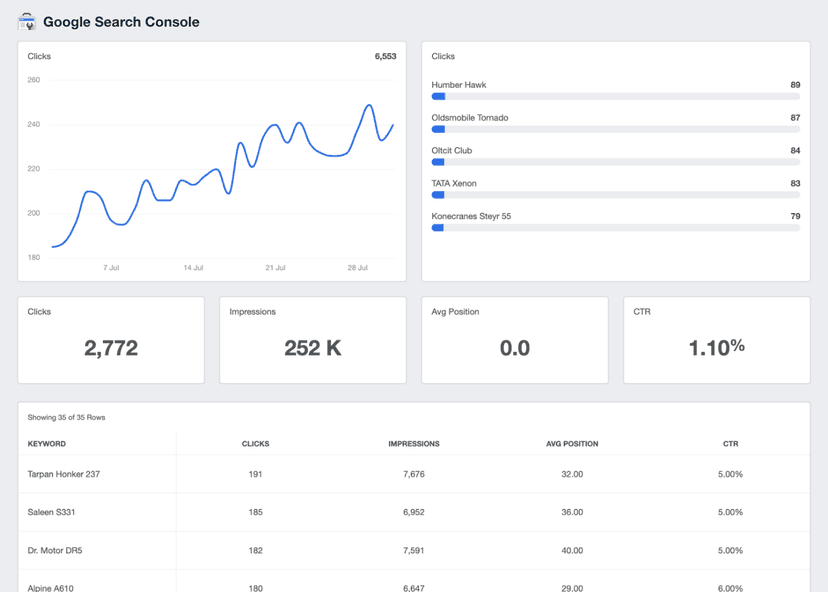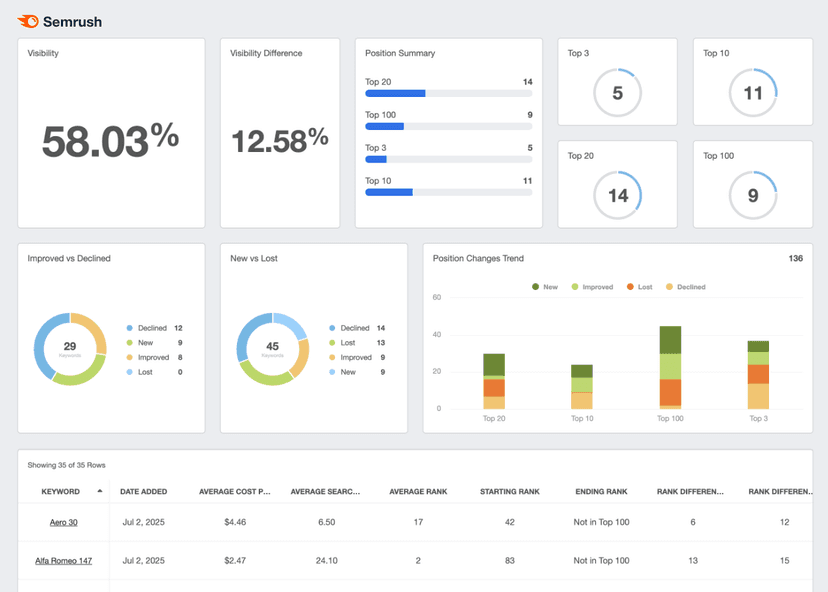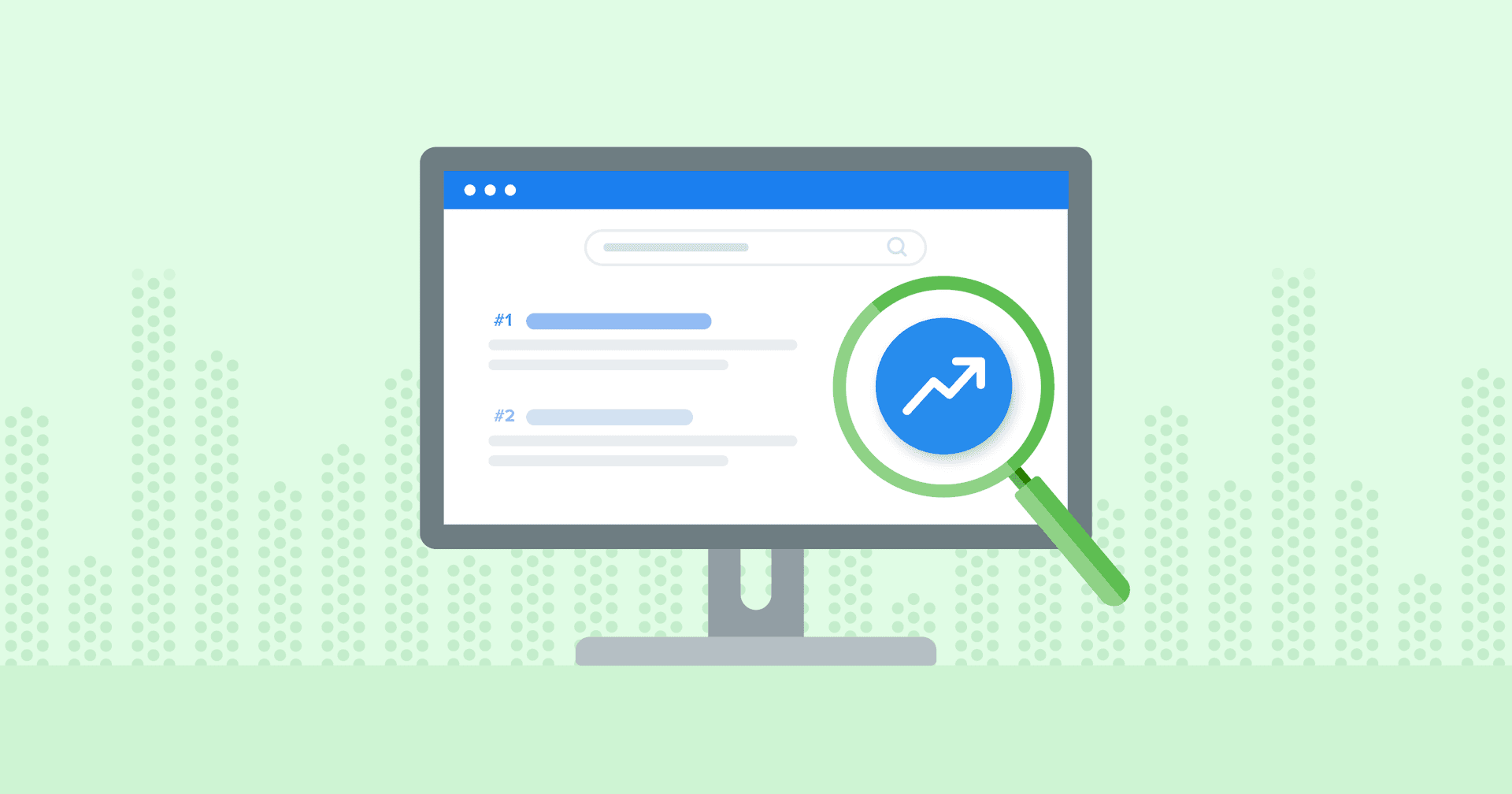Organic Traffic
SEO Review
Assess SEO effectiveness through organic traffic analysis.
Content Strategy
Guide content creation using traffic-driven topic insights.
Performance Benchmark
Compare traffic trends with industry standards.
ROI Highlight
Show organic traffic in client reports to demonstrate ROI.
Why Organic Traffic Is Important
Organic Traffic is a crucial website metric, primarily due to its ability to indicate the health and effectiveness of search engine optimization (SEO) strategies. Unlike paid traffic, which relies on advertising budgets, Organic Traffic is a testament to a website's relevance and appeal to its target audience.
Additionally, high Organic Traffic typically correlates with higher Engagement and Conversion Rates. It strongly indicates content quality and relevance, reflecting how well a site meets user needs and search intent. Understanding and optimizing for Organic Traffic is essential for long-term campaign success, as it is sustainable and cost-effective compared to paid channels.
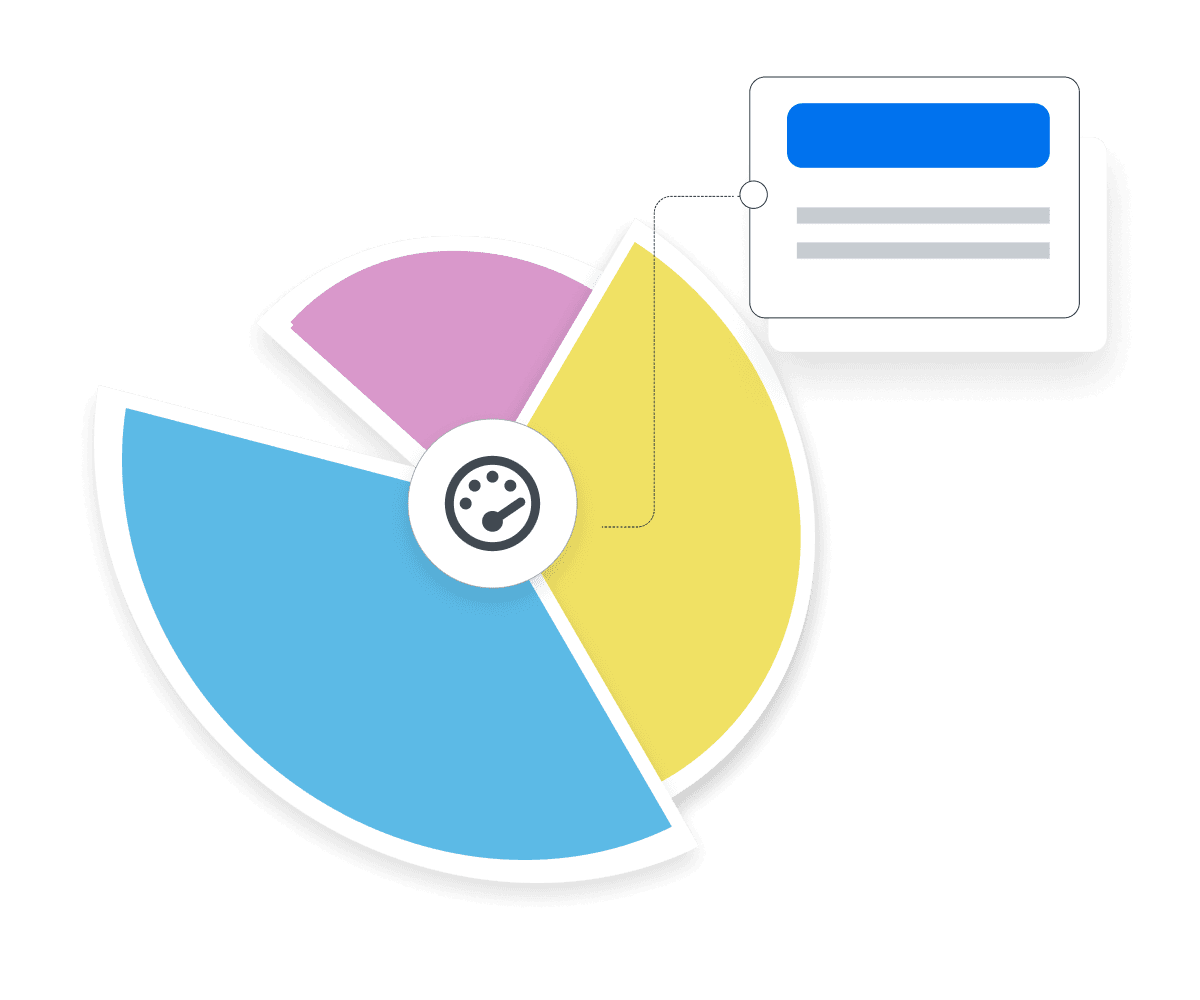
Stop Wasting Time on Manual Reports... Get SEO Insights Faster With AgencyAnalytics
How Organic Traffic Relates to Other KPIs
Organic Traffic works with other key performance indicators (KPIs), such as Conversion Rates. High-quality, relevant traffic acquired from intent-based searches often leads to higher conversion rates, indicating not just quantity but the quality of visitors. Similarly, Page Views per Session metric reflects the engagement with and interest in the website's content after the click.
Bounce Rate also shares a symbiotic relationship with Organic Traffic. Effective SEO and content strategies that drive relevant Organic Traffic typically result in lower Bounce Rates, as visitors find the content matches their search intent.
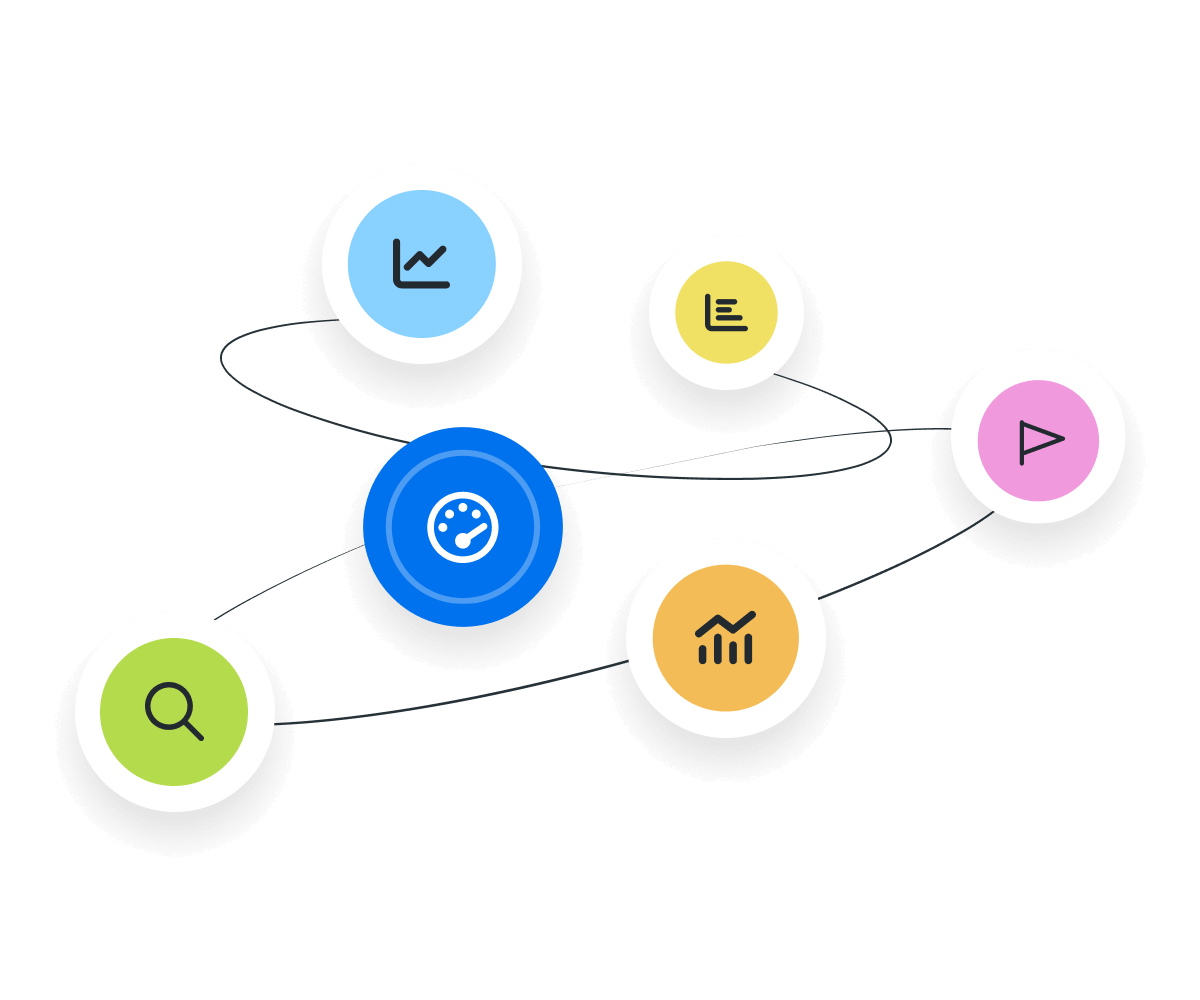
Organic Search Traffic vs. Paid Search Traffic
Organic and paid traffic have unique characteristics. Organic Search Traffic flows from Google search and other engines, primarily from a well-crafted SEO strategy. It results in users finding a website through organic listings, a clear indicator of effective content and keyword relevance.
On the other hand, Paid Search Traffic, including Pay-Per-Click and display advertising via Google Ads, hinges on financial investment. This traffic is driven by intent, targeting users through specific keywords.
Going Beyond Search Engines To Direct Traffic
To increase traffic or achieve high organic rankings, explore alternative platforms beyond Google's search engine results pages. For example, when a brand is active on social media networks, engaging content boosts overall website traffic and provides social signals to search engines.
Another effective strategy to increase Organic Traffic is leveraging Google Business Profile. This tool places a business directly in local search results and Google Maps, providing more visibility, especially for local businesses.
Additionally, consistently publishing content through a blog post is a worthwhile strategy beyond the organic opportunities. Blog posts attract new visitors, build brand advocacy, and encourage users to stay on a website longer.

How To Measure Organic Traffic
To measure Organic Traffic, use web analytics tools like Google Analytics. These platforms track the number of visitors arriving at a site through organic search engine results. Within the analytics interface, segment the traffic data to focus specifically on organic sources, distinguishing it from other channels like paid ads or referrals.
What Is a Good Average of Organic Traffic?
A good average of Organic Traffic is relative to the industry, but generally, consistent month-over-month growth is positive. A few thousand visits per month is typically considered healthy for a small to medium-sized business. For larger sites or those in high-traffic industries, tens of thousands or more signify strong performance.
What Is a Bad Average of Organic Traffic?
A bad average of Organic Traffic is indicated by stagnation or decline over several months. For most websites, receiving only a handful of organic visits daily or seeing a consistent downward trend points to issues in SEO, content relevance, or website usability that need addressing.
How To Set Organic Traffic Benchmarks and Goals
Without industry-wide benchmarks, agencies use historical data to set personalized benchmarks. This involves analyzing past Organic Traffic trends to understand a specific website's normal levels and growth patterns. For example, an average 10% month-over-month increase in organic visits could be a realistic benchmark for a growing site.
Additionally, agencies back-calculate required Organic Traffic to meet specific revenue targets. By understanding the conversion rate from Organic Traffic to sales, agencies estimate how much traffic is needed to achieve desired financial outcomes.
Granular Insights into Organic Traffic Performance
Marketers segment the traffic data to gain deeper insights into organic traffic performance.
This often includes analysis based on:
Geographical Location: Understanding which regions drive the most traffic.
Device Usage: Segmenting traffic by device (mobile vs. desktop) to optimize user experience.
Time on Site and Pages per Session: These metrics help understand user engagement and content effectiveness.
Traffic Source Breakdown: Differentiating between different search engines or organic sources.
Landing Page Performance: Identifying which pages attract the most organic traffic and why.
This detailed analysis helps pinpoint specific strengths and areas for improvement, allowing for more targeted and effective SEO and content strategies.
Why Organic Traffic Matters to Clients
From a client's viewpoint, Organic Traffic is a vital measure of online visibility and brand reach. This metric directly indicates how effectively a website resonates with its target audience through search engines. Higher Organic Traffic means more eyes on the client's products or services, potentially leading to increased sales and revenue. It's a tangible reflection of the website's ability to attract and engage customers naturally, without the need for paid advertising.
Clients also value Organic Traffic for its long-term benefits. Unlike paid channels, which stop generating traffic once the budget is exhausted, Organic Traffic, driven by strong SEO and quality content, provides sustained results. This long-term, cost-effective nature of Organic Traffic makes it an attractive KPI for clients, especially those with limited advertising budgets.

Why Organic Traffic Matters to Agencies
For agencies, Organic Traffic is a testament to their SEO and content marketing expertise. It is a tangible measure of the agency's ability to enhance a website's search engine ranking and visibility. High Organic Traffic is proof of successful keyword targeting, effective on-page optimization, and impactful content creation, showcasing the agency's skill in driving relevant traffic to client websites.
Organic Traffic also offers agencies insights into user behavior and preferences, enabling them to refine their strategies for even better results. It helps identify which aspects of the website are performing well and which need improvement.
Maintaining or increasing Organic Traffic is a key performance indicator directly related to client satisfaction and retention. It's evidence of the agency's ongoing value to its clients, reinforcing its reputation and expertise against competitors.

Save Time and Money by Automating Your Client Reporting
Best Practices When Analyzing and Reporting on Organic Traffic
Looking at a breakdown of Organic Traffic through various lenses is important to set the stage for more effective and efficient advertising campaigns. This deep dive enhances an agency's understanding of current performance, aids in predicting future trends, and helps make better strategic decisions.
Ensure Data Accuracy
When measuring Organic Traffic, prioritize data accuracy. This means regularly auditing analytics tools and filters to ensure tracking codes are correctly implemented and that bots or irrelevant sources don't skew data.
Analyze Organic Traffic Over Time
Analyze Organic Traffic to identify trends and patterns. This longitudinal view helps understand seasonal variations, the impact of specific campaigns, and long-term growth or decline.
Measure Organic Traffic by Keyword Campaign
Measure Organic Traffic across various keyword groupings and intent types to evaluate the individual contributions to the overall traffic. This level of data provides clarity on which campaigns are most effective and why.
Put Organic Traffic in Context
Put Organic Traffic in context by comparing it with other KPIs like conversion rates and bounce rates. This holistic approach provides a more nuanced understanding of traffic quality and user engagement.
Align Organic Traffic to Client Goals
Align Organic Traffic analysis with client goals. Understanding how this KPI impacts client-specific objectives, like lead generation, online sales, or brand awareness, is key for meaningful insights.
Include Actionable Recommendations
Include actionable recommendations based on Organic Traffic analysis. Suggest SEO improvements, content strategies, or user experience enhancements to increase traffic quality and quantity.
FAQs About Organic Traffic
Still have questions about organic traffic? Don’t worry—we’ve got you covered.
Organic traffic in SEO refers to website visits that come from unpaid search engine results. These users find your client's site by entering keywords into search engines like Google and clicking on non-sponsored listings. Organic traffic reflects how well your client's SEO and content strategies align with user search intent.
Organic traffic is important for your client's website because it reflects long-term visibility and relevance without relying on paid ads. High organic traffic means their content is ranking well, meeting user intent, and attracting qualified visitors. It often leads to better engagement, lower bounce rates, and stronger conversion rates.
To measure your client's organic traffic, use tools like Google Analytics. Go to the acquisition section and segment by “organic search.” This reveals how many users arrive via search engines, excluding other channels like paid or referral. Make sure tracking is set up correctly and filters are in place to remove bot traffic.
A good average of organic traffic depends on the industry and site size. For small businesses, a few thousand visits per month may indicate growth. For larger sites, tens of thousands might be the baseline. Consistent month-over-month growth and alignment with your client's goals are the most important insights to watch.
To increase your client’s organic traffic, optimize pages for long-tail keywords, publish high-value content regularly, and improve technical SEO. Use Google Search Console to track performance and fix crawl errors. Blog consistently, align content with search intent, and boost page speed to attract more qualified visitors.
Google Analytics 4 Dashboard Example

Related Integrations
How To Improve Organic Traffic
Increasing organic traffic is critical for online visibility and success. These actionable tips offer strategies to enhance a website's appeal to search engines and audiences, driving more organic visits.
Optimize Keywords
Carefully research and select keywords. Focus on long-tail keywords and user intent to attract targeted traffic and improve search rankings.
Create Quality Content
Regularly publish valuable, relevant, and engaging content. High-quality content attracts and retains visitors, encouraging shares and backlinks.
Monitor Analytics
Regularly analyze traffic data to understand visitor behavior. Use insights to refine SEO strategies and improve organic traffic.
Related Blog Posts
See how 7,100+ marketing agencies help clients win
Free 14-day trial. No credit card required.

